The Spanish Silver Dollar. Holed. Cut. And Stamped. A unique collection formed by esteemed numismatist, Barrie Winsor.
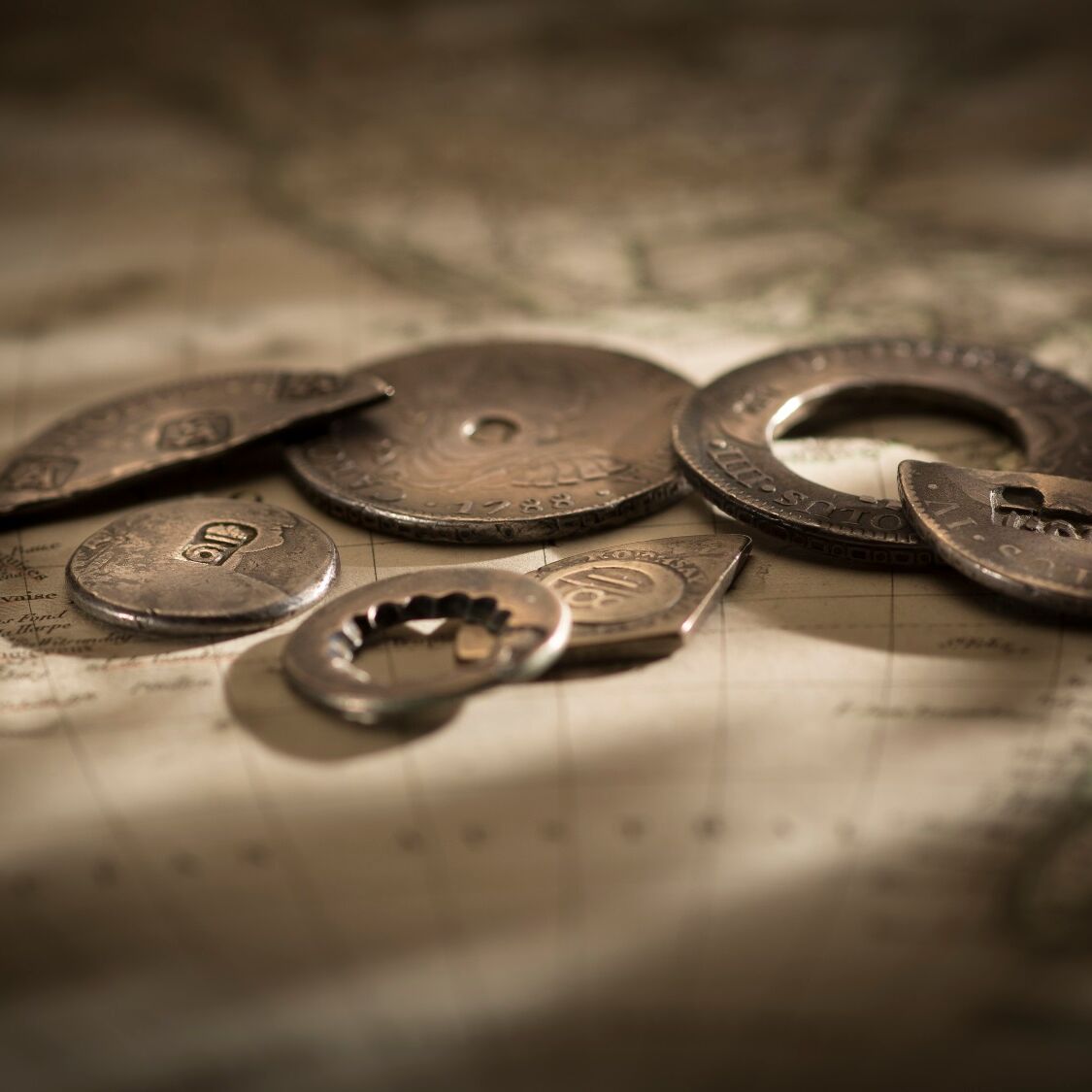
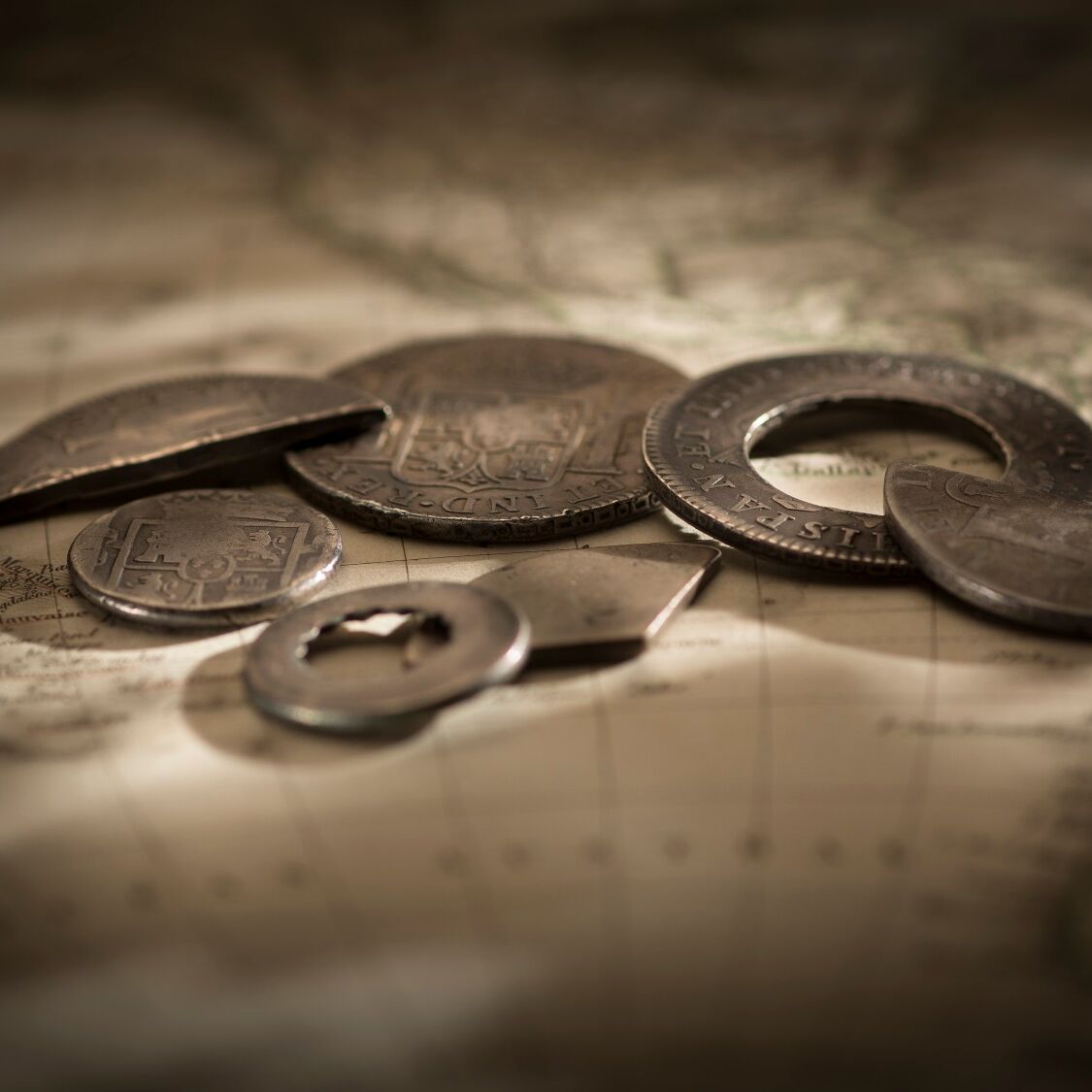
The Spanish Silver Dollar. The coin that ruled the world.
Beginning with Columbus in 1492 and continuing for nearly 350 years, Spain conquered and settled most of South America, the Caribbean, and the south west of America.
It was however, the silver rich continent of South America that became Spain’s treasure trove, bank rolling its ascendancy as a world power.
In 1536, Spain established its first colonial mint in Mexico. It was by far the most lucrative of the Spanish mints, coining more than 2 billion dollars’ worth of silver pieces over a 300 year period (1536 – 1821). The Lima and Potosi Mint came on board in 1568 and 1573 respectively.
Not only were the Spanish mint’s prolific but the monarchy in 1537 introduced exacting standards of weight and purity into its coinage that would see the worldwide dominance of the Spanish Silver Dollar and its ultimate acceptance as an international currency and medium of exchange.
The Spanish Silver Dollar was fabled as pirate plunder. It was the famous ‘piece of eight’ of the Spanish empire with a diameter of 39mm and weighing 27.70 grams of pure silver.
And it was used – and abused – the world over for centuries.
It was the coin that was holed and counter stamped by private individuals, banks and government authorities in the eighteenth and nineteenth century including the penal colony of New South Wales.
The Spanish Silver Dollar was defaced by Governor Lachlan Macquarie to create his Holey Dollar and Dump, the very first coins struck in Australia.
When cut into quarters, half or three-quarter segments and stamped with the insignia of a colony, it served as small change for that dependency.
Such practises were widely used throughout the British colonies of the Caribbean and several African nation’s including Sierra Leone.
Even Great Britain succumbed to the lures of the Spanish Silver Dollar.
In 1797 the Bank of England purchased for its own account well over two million dollars of Spanish Silver Dollars to supplement its own coinage. These were counter stamped with an oval bust of King George III.
Cut Quarter Segment issued under William IV, by the British colony of Sierra Leone.
Coin Good / Counter stamps Extremely Fine
$7,500 - SOLD
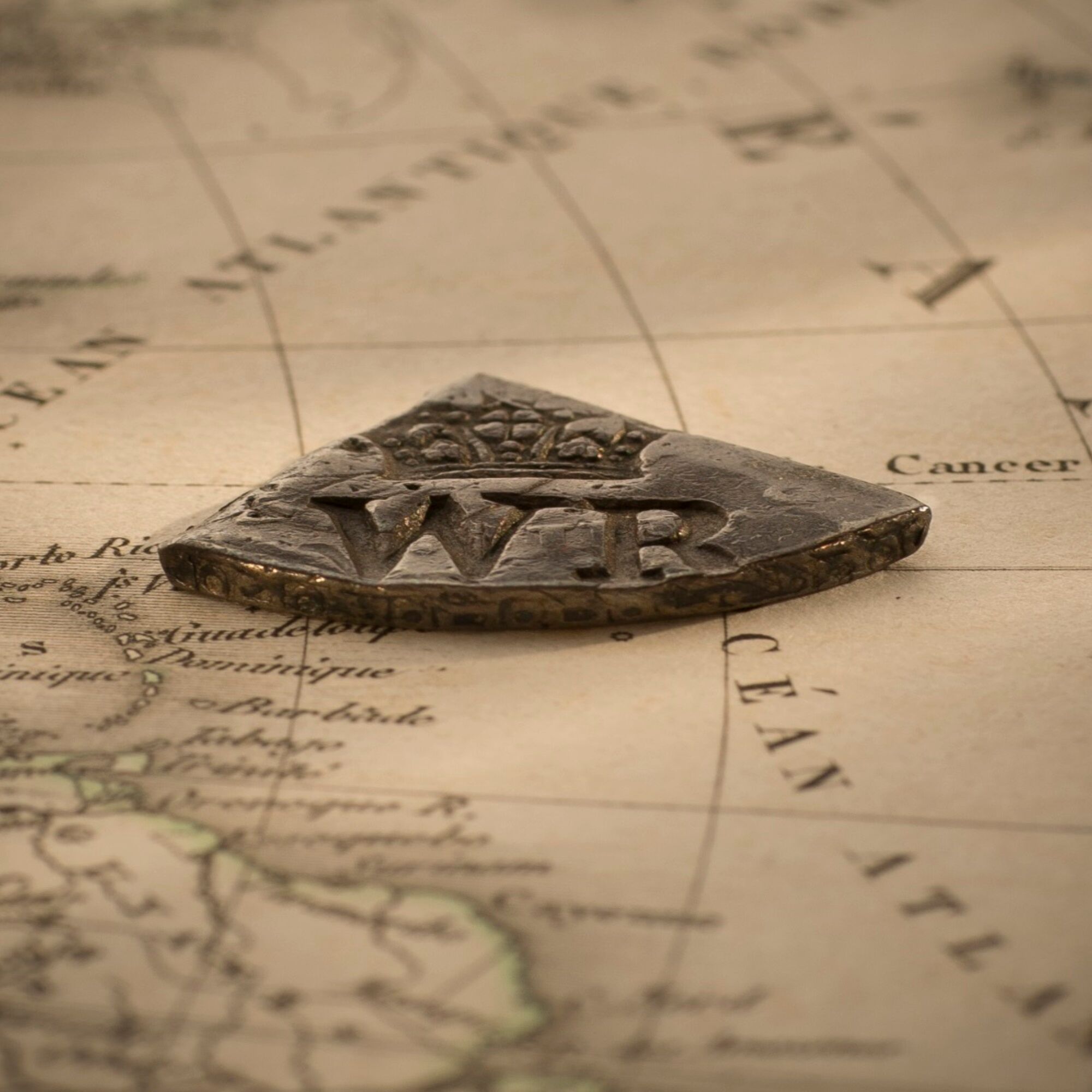
An extremely rare, cut quarter segment of a Spanish Silver Dollar counter stamped circa 1832 – 1834 with a crown and ‘W R’ for William Rex.
Testimony to its rarity - and collector appeal - this coin sold for $5,000 on an estimate of $3,000 in 2007.
The Spanish Dollar was the principal coin in circulation in Sierra Leone in the 1820s and the practice of cutting the dollars into quarters was widespread.
To make the cut dollars legally current, the colony obtained from England a stamp marked with a Crown and the letters ‘W’ ‘R’ for William Rex. The old cut dollars were called in and the stamped quarter dollars were issued.
A Proclamation of 1832 made such stamped cut money legal tender.
Clipping (shaving metal from the coin’s circumference) was a common practice that debased the currency and undermined confidence. In 1835 the Lieutenant-Governor wrote that the over stamping had failed to stem clipping and Treasury urged that the cut dollars be replaced by British coins.
The cut money was re-called in 1838 and 83,076 cut quarters were shipped to England to be sold as bullion and replaced with British shillings, sixpences and threepences.
On 7th January 1839 all cut monies ceased to be the current coinage of the colony.
One Shilling and Eight Pence Token cut from a Spanish Silver Dollar and issued by the Rothsay Cotton Mills, Scotland.
About Very Fine
$1,350 - SOLD
The severe shortage of silver coin in Great Britain, prompted private tradesmen to cut and counter stamp Spanish Silver Dollars and cut dollars. One such private trader was the Rothsay Cotton Mills, established 40 miles south west of Glasgow.
Prior to Winsor's ownership we note that this piece had been held by Syd Hagley. Another leading industry figure.
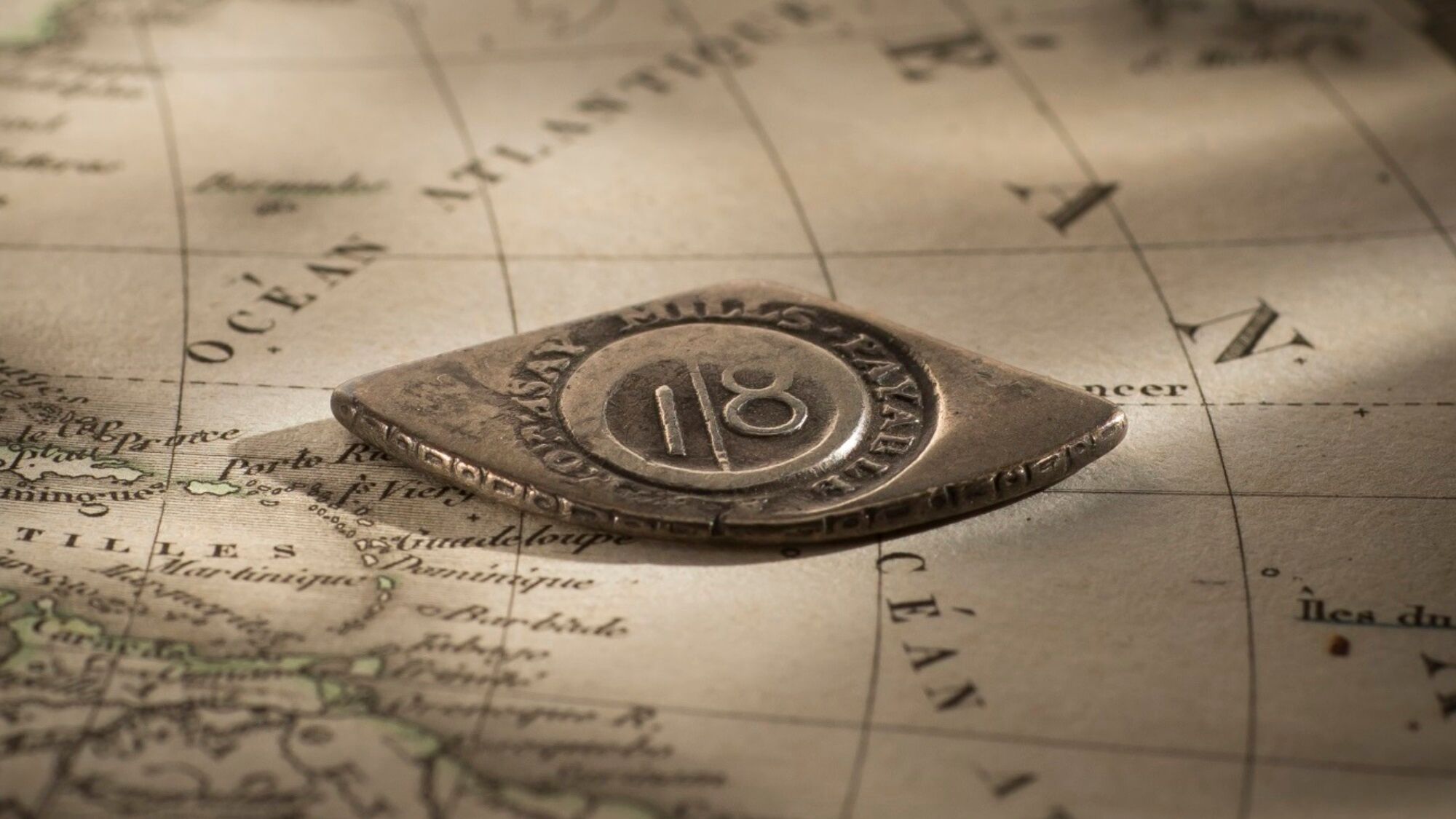
1813 Circular segment from a Spanish Silver Dollar by the British colony of Dominica.
Coin Good / Counter stamps Very Fine
$4,250 - SOLD
Extremely rare. A circular segment cut from a Spanish Silver Dollar; the hole featuring 15 notches. Counter stamped with a Crown and '4' for the value of 4 bitts.
We note that prior to Barrie Winsor, this piece had been owned by esteemed British colonial collectors J. W. Garrett and Robert Climpson.
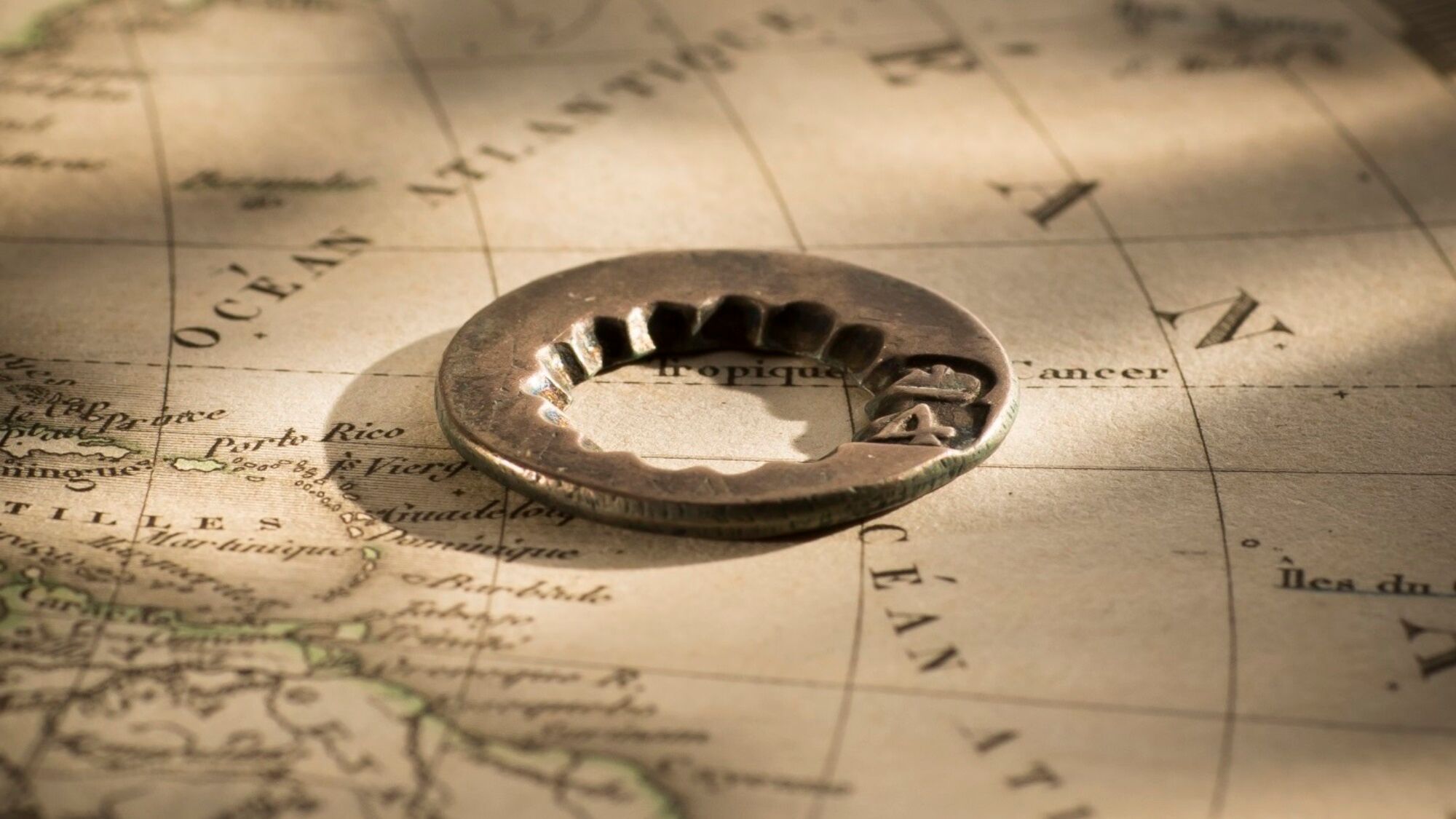
1813 Circular segment from a Spanish Silver Dollar by the British colony of Dominica.
Coin Fine / Counter stamps Very Fine
$1,250 - SOLD
Very scarce. A circular segment cut from a Spanish Silver Dollar and counter stamped with a Crown and a '6' for the value of 6 bitts in a vertical rectangle. Note the outline of the portrait of the Spanish King.
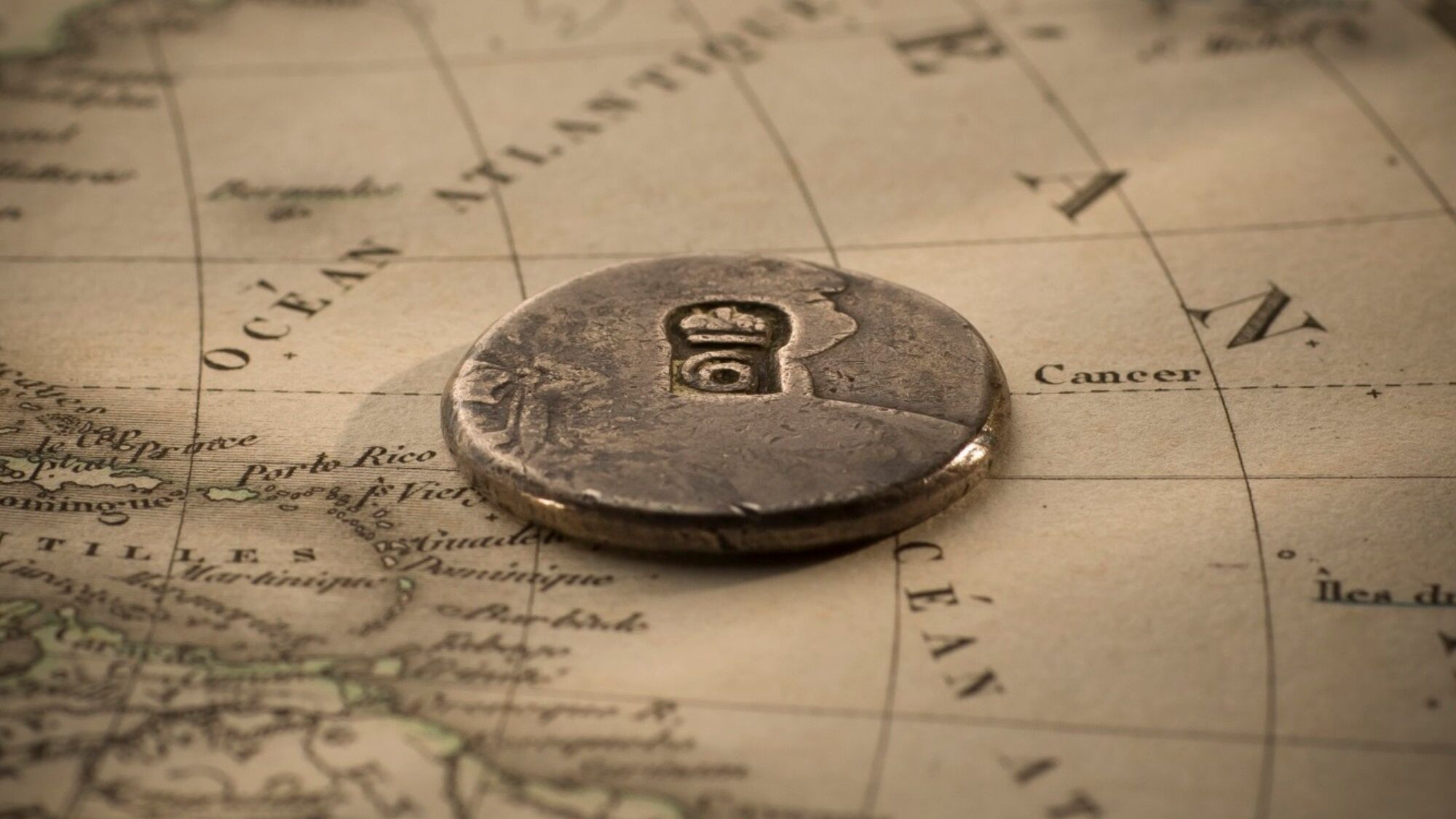
Cut Half Spanish Silver Dollar by the British colony of Tortola.
Coin Fine / Counter stamps Very Fine
Price $1,950 - SOLD
On 3 February 1801, the Assembly of the Virgin Islands passed an Act to establish a current coinage for the internal use of the community. The cut half and quarter dollars circulating in the colony were withdrawn and officially re-stamped with the word 'TORTOLA'.
This half dollar was created from an extremely rare Charles IV transitional dollar (note the legend Carolus IV). Ex Hopkins Hoard and Spink London 1988 and sold with Auction tickets.

Cut Fifth Segment of a Charles IIII Silver Dollar Curacao, British Occupation.
Coin Very Good / Counter Stamps Very Fine
Price $1,000 - SOLD
To cope with the demand for small change during the administration of Governor Lauffer (1799 – 1803), Spanish Dollars were cut into four parts and counter stamped with a roseace of five petals.
Ex Von Schuckmann Collection.
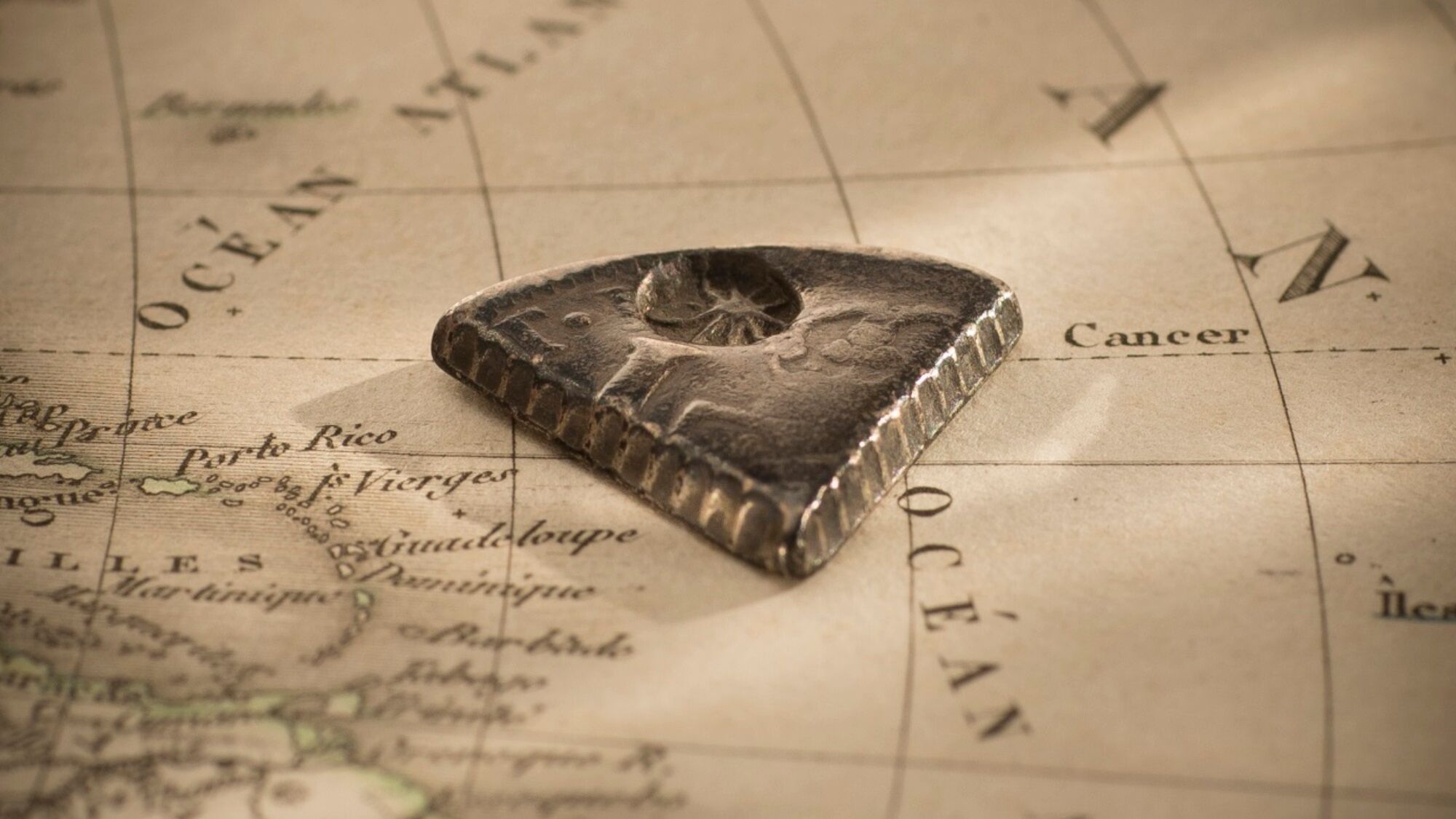
1758 Lima Mint Pillar Dollar counter stamped 'GR' on both sides
Very Fine
$3,950 - SOLD
In the seventeenth and eighteenth centuries Jamaica was the bullion-centre of the New World.
Indeed, Jamaica was the most prosperous of the West Indian colonies.
As it housed the headquarters of the naval and military forces - and was the home of the buccaneers - the island constantly received large supplies of coin.
While the other Islands in the Caribbean traded in sugar and other commodities, Jamaica's currency of choice was the Spanish Silver Dollar.
On 11 November 1758, the Assembly passed an Act for ascertaining the value of Spanish Milled money in the colony and for rendering the payments of debts more certain.
The Act required that the Spanish Silver Dollars circulating in the colony be stamped with the letters 'GR' on both sides and that thereafter they were to be recognised as legal tender in the colony.
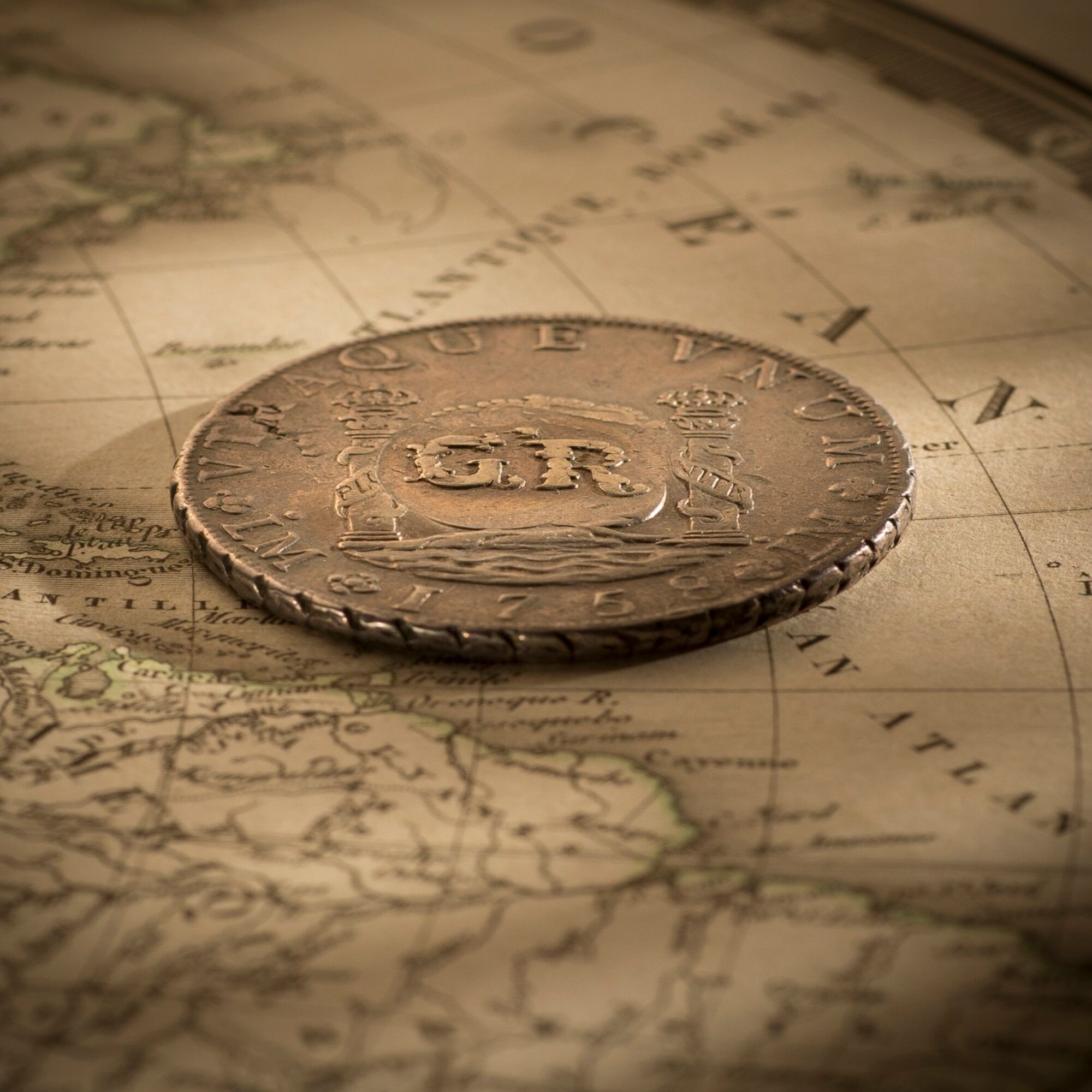
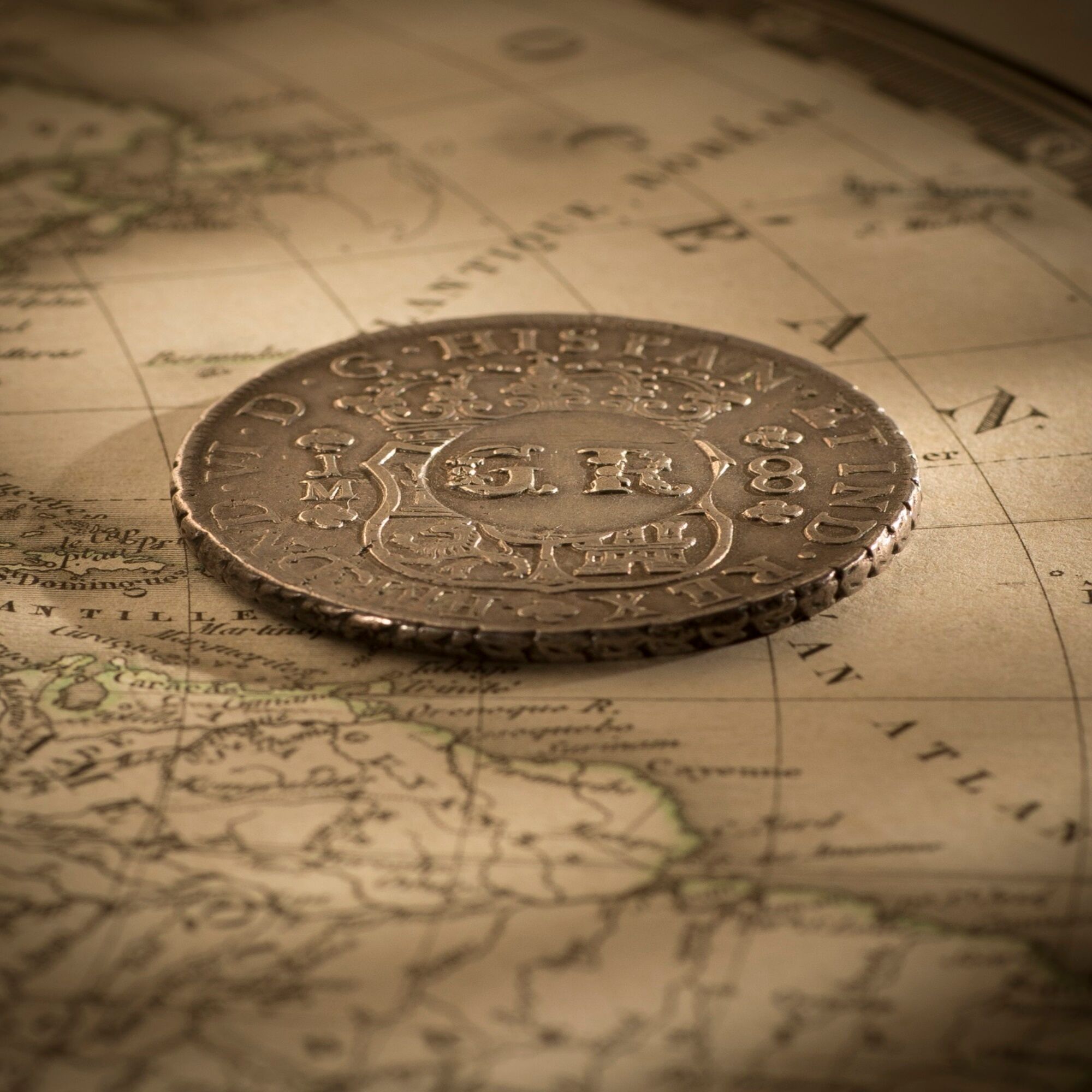
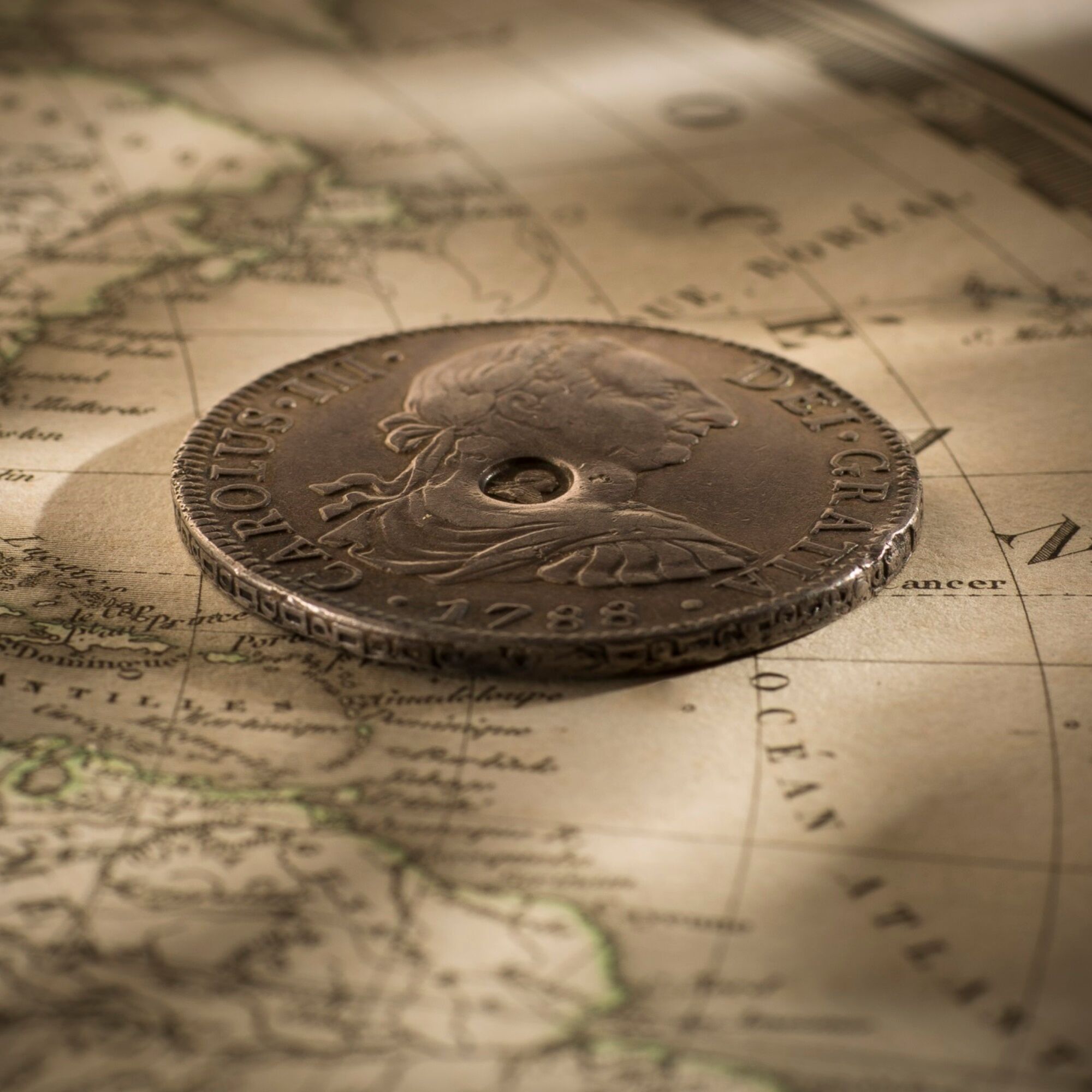
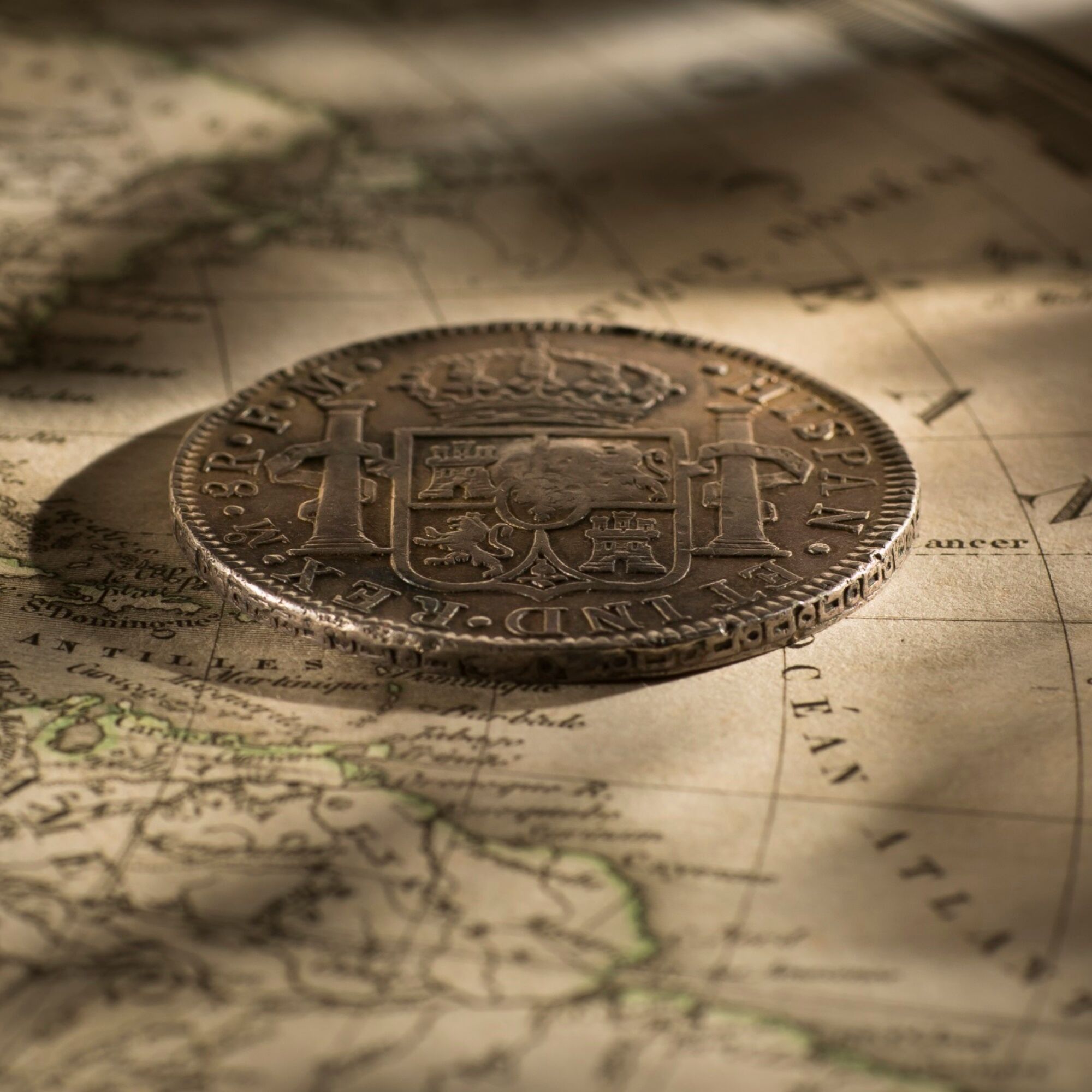
1788 Mexico Mint Spanish Silver Dollar counter stamped with the bust of George III in 1797
Very Fine
Price $900 - SOLD
The date of this Spanish Silver Dollar has an affinity with all Australians. 1788.
Due to the deplorable state of its own currency, Great Britain succumbed to the lures of the Spanish Silver Dollar.
In 1797 the Bank of England purchased for its own account well over two million dollars of Spanish Silver Dollars to supplement its coinage.
The coins were counter stamped with an oval stamp depicting the bust of George III which lead to the saying … “the Bank to make Spanish Dollars pass, stamped the head of a fool on the neck of an ass”.
Declared current at 4 shillings ninepence these coins were extremely unpopular from the start, partially because of an animosity towards Spain but also because they were a forger’s delight.
After seven months the great majority of these coins were withdrawn from circulation.
1789 Mexico Mint Spanish Silver Dollar counter stamped with the bust of George III in 1797
Very Fine
Price $1,450 - SOLD
This 1789 Mexico Mint Silver Dollar was counter stamped in 1797 with the bust of King George III.
The keen collector will note that this 1789 Silver Dollar has the legend of Carolus IV but the portrait of King Charles III, who died two years earlier in 1788.
It was minted during a period of transition at the Mexico Mint when the portrait of the new King had not been received. Eager to maintain production of silver coins to flow into Spanish coffers, a Royal decree granted the colonial mints the right to continue striking coins with the portrait of the deceased King Charles III. The legend was however amended to acknowledge the new monarch Charles IIII.
Transitional Silver Dollars are in their own right supremely rare.
They chronicle the limitations of communications in this era and the challenges of the colonial mints wishing to maintain silver coin production while at the same time observing the currency protocols necessary for the passing of a monarch.
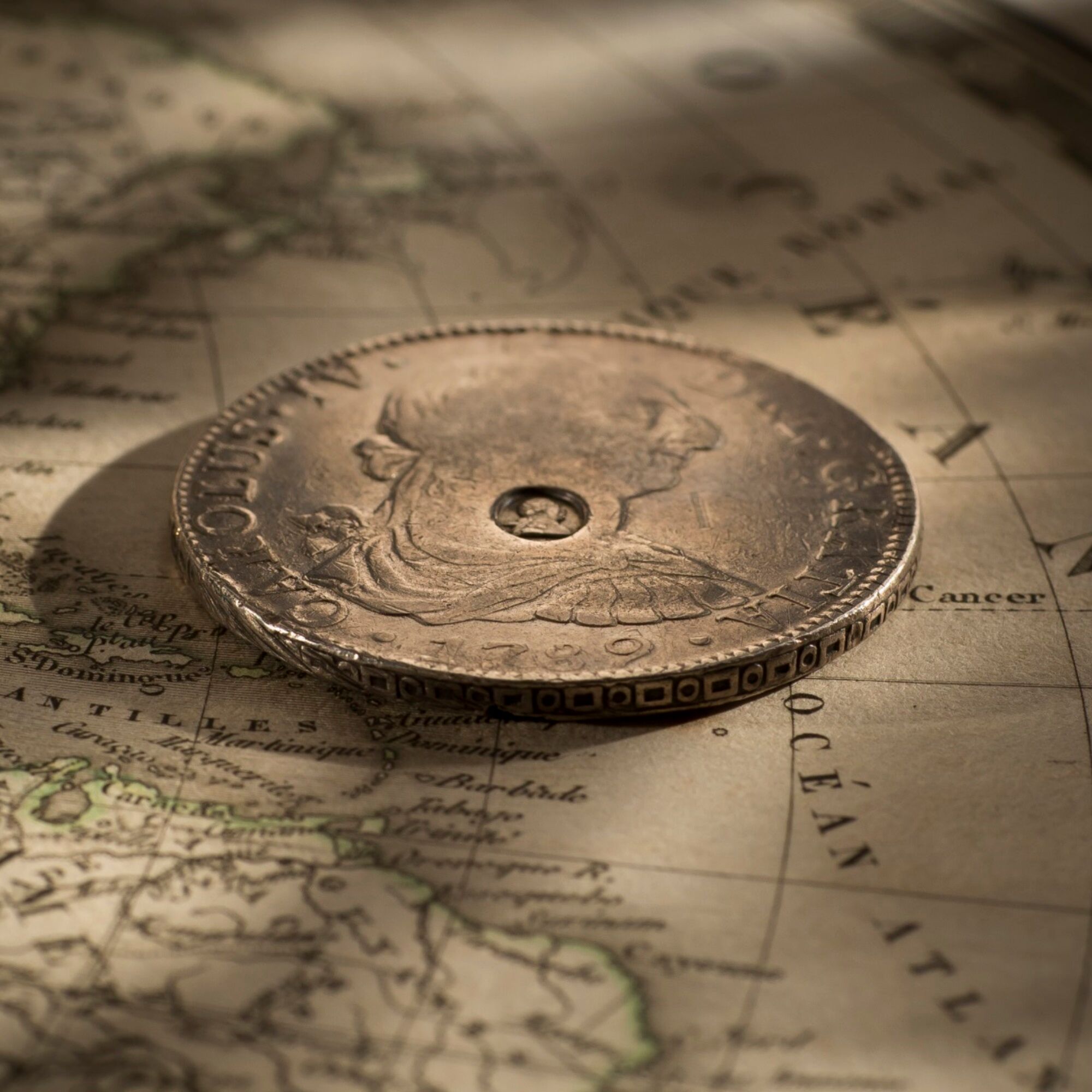
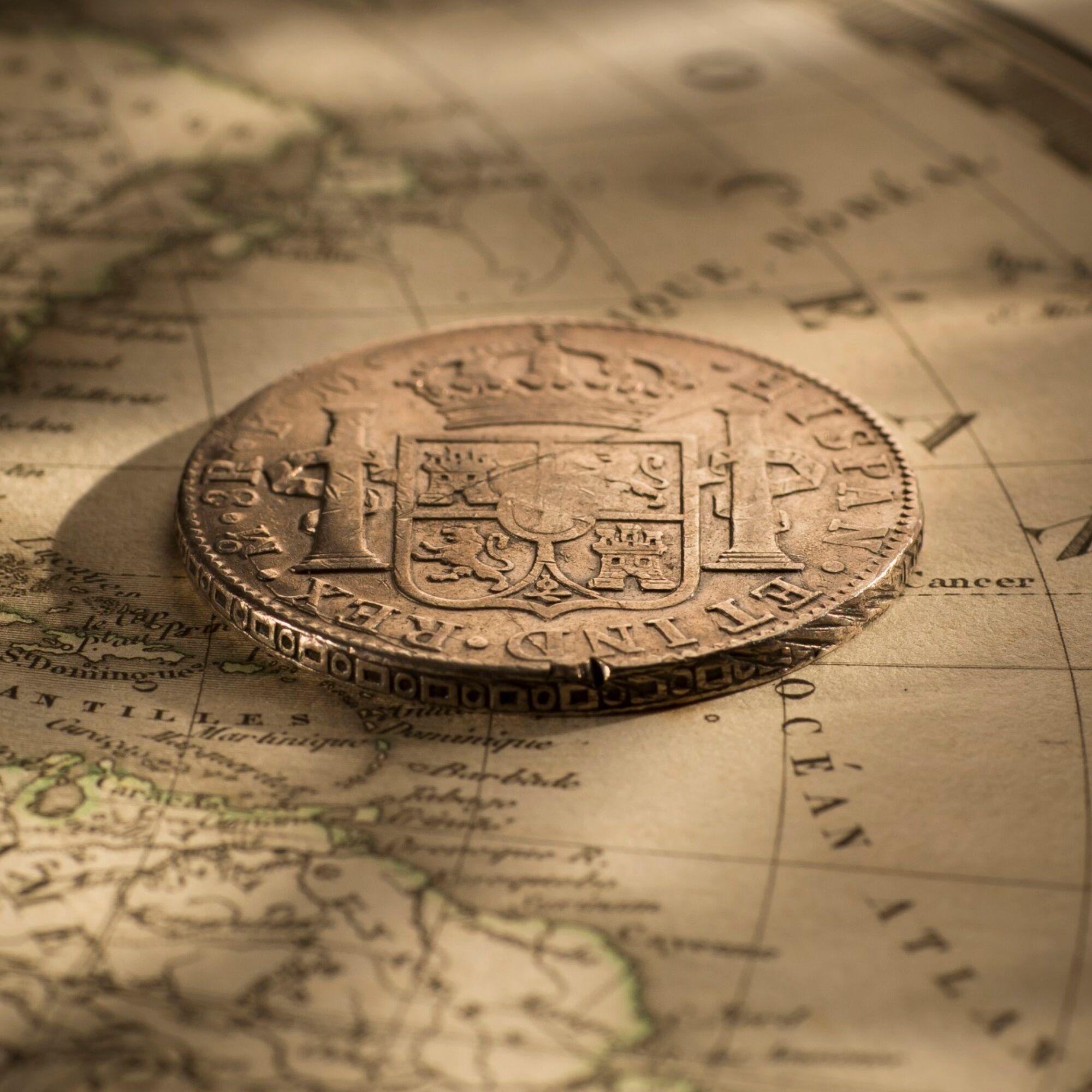
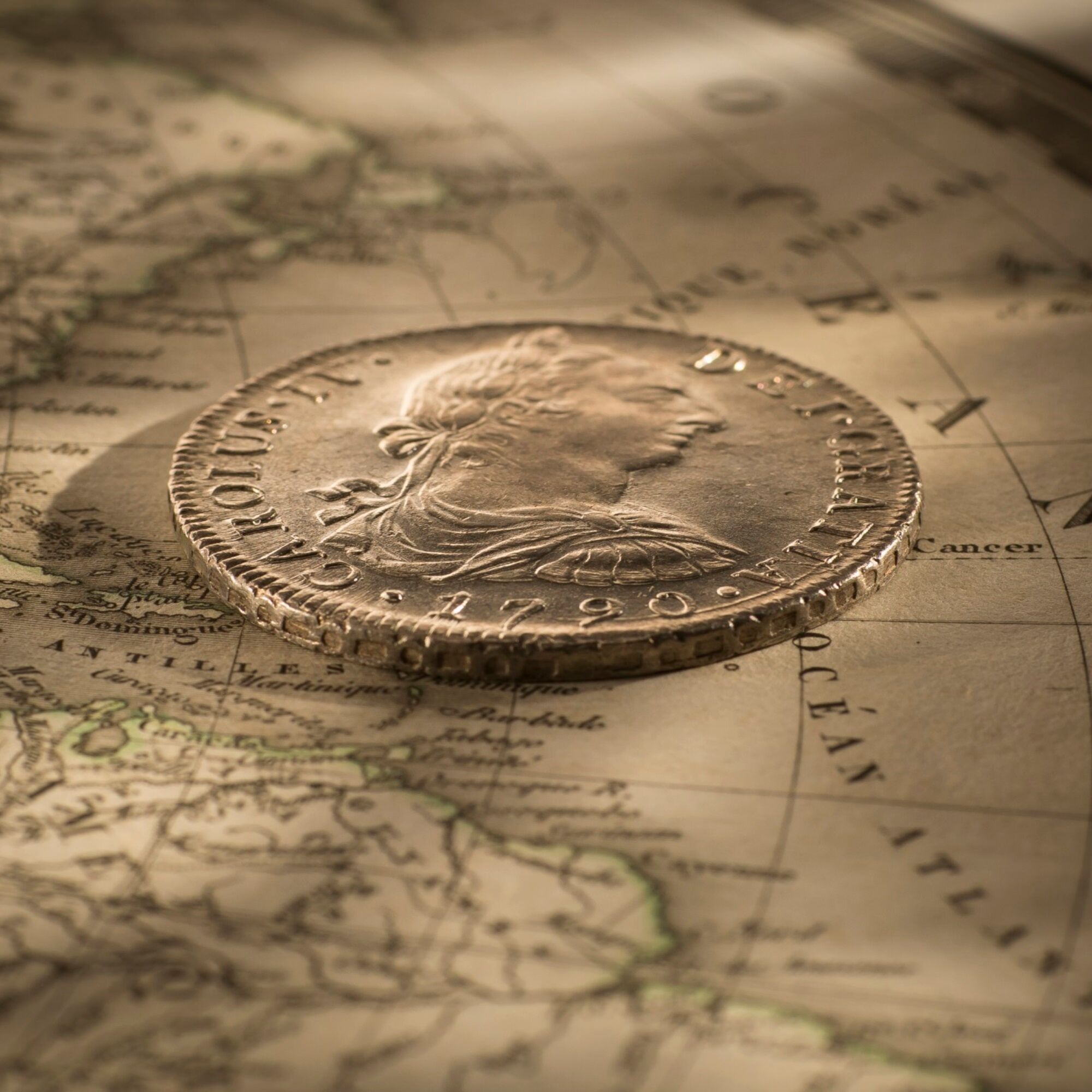
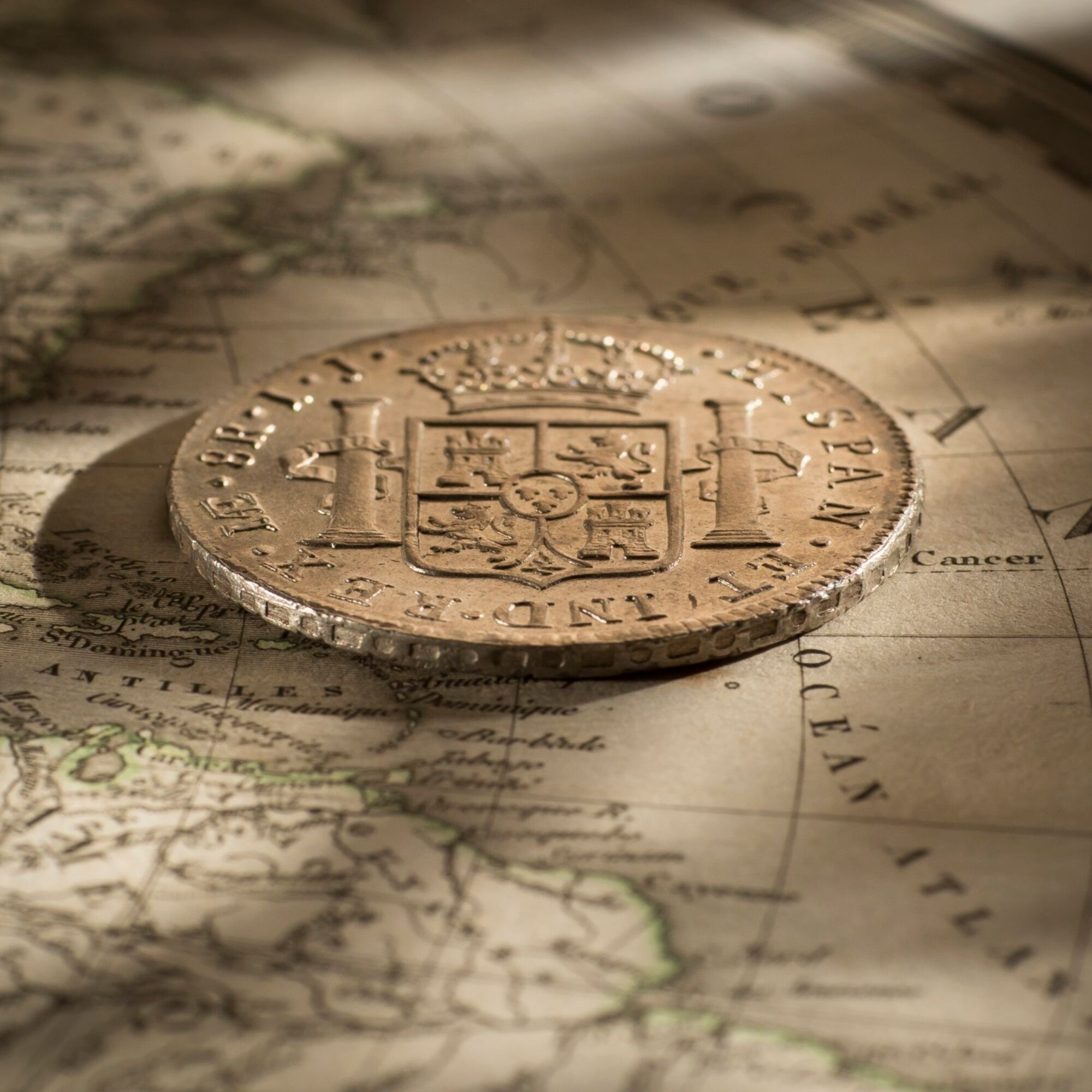
1790 Charles IV Spanish Silver Dollar, Lima Mint
Choice Uncirculated
$2,750 - SOLD
This 1790 Spanish Silver Dollar was minted at the Lima Mint in Peru. Struck more than two centuries ago, it has been preserved in an original lustrous state and is presented as Choice Uncirculated.
At this quality level it is extremely rare and a prized collector piece. Lima Mint makes it rarer again.
The keen collector will note that this Silver Dollar has the legend of Carolus IV but the portrait of King Charles III, who died two years earlier in 1788.
It was minted during a period of transition at the Lima Mint when the portrait of the new King had not been received. Eager to maintain production of silver coins to flow into Spanish coffers, a Royal decree granted the colonial mints the right to continue striking coins with the portrait of the deceased King Charles III. The legend was however amended to acknowledge the new monarch Charles IIII.
Transitional Silver Dollars are in their own right supremely rare.
They chronicle the limitations of communications in this era and the challenges of the colonial mints wishing to maintain silver coin production while at the same time observing the currency protocols necessary for the passing of a monarch.
© Copyright: Coinworks
